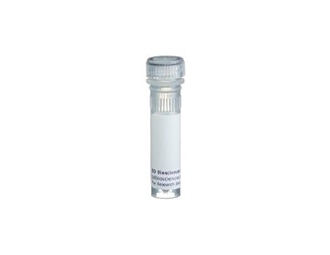-
Training
- Flow Cytometry Basic Training
-
Product-Based Training
- BD FACSDiscover™ S8 Cell Sorter Product Training
- Accuri C6 Plus Product-Based Training
- FACSAria Product Based Training
- FACSCanto Product-Based Training
- FACSLyric Product-Based Training
- FACSMelody Product-Based Training
- FACSymphony Product-Based Training
- HTS Product-Based Training
- LSRFortessa Product-Based Training
- Advanced Training
-
- BD FACSDiscover™ S8 Cell Sorter Product Training
- Accuri C6 Plus Product-Based Training
- FACSAria Product Based Training
- FACSCanto Product-Based Training
- FACSLyric Product-Based Training
- FACSMelody Product-Based Training
- FACSymphony Product-Based Training
- HTS Product-Based Training
- LSRFortessa Product-Based Training
- United States (English)
-
Change country/language
Old Browser
This page has been recently translated and is available in French now.
Looks like you're visiting us from {countryName}.
Would you like to stay on the current country site or be switched to your country?


Regulatory Status Legend
Any use of products other than the permitted use without the express written authorization of Becton, Dickinson and Company is strictly prohibited.
Preparation And Storage
Product Notices
- Since applications vary, each investigator should titrate the reagent to obtain optimal results.
- An isotype control should be used at the same concentration as the antibody of interest.
- Caution: Sodium azide yields highly toxic hydrazoic acid under acidic conditions. Dilute azide compounds in running water before discarding to avoid accumulation of potentially explosive deposits in plumbing.
- For fluorochrome spectra and suitable instrument settings, please refer to our Multicolor Flow Cytometry web page at www.bdbiosciences.com/colors.
- Please refer to www.bdbiosciences.com/us/s/resources for technical protocols.
Companion Products



.png?imwidth=320)
The RM134L antibody reacts with CD252 (OX-40 Ligand, OX-40L), a member of the NGF/TNF superfamily which is present on antigen-presenting cells and activated B lymphocytes. OX-40L interacts with OX-40 Antigen (CD134) found predominantly on activated T cells. This ligand-receptor pair is grouped with pairs such as CD40-CD40L and CD80- or CD86-CD28, which contribute significantly to B-cell/T-cell interaction during the immune response. The OX-40L-OX-40 interaction is reciprocally costimulatory in that both T cells and B cells are activated in cross-linking. Stimulation via OX-40 Antigen increases the proliferative and IL-2 production responses of activated T cells, while stimulation via OX-40L enhances proliferation and Ig secretion by activated B cells. The RM134L mAb stains B cells activated for four days with anti-IgM plus anti-CD40 (Clone HM40-3) antibodies. An increased binding of OX-40-Ig fusion protein to mouse splenic B cells was observed when B cells were treated with lipopolysaccharide (LPS), suggesting that OX-40L expression is augmented in LPS-activated splenic B cells when compared to resting cells, but this observation could not be confirmed with the RM134L mAb. In addition, other studies with OX-40-Ig fusion protein detected OX-40L on CD4+ and CD8+ activated splenic T cells, but OX-40L was not detected on T cells with the RM134L mAb. Similar results have been reported by others. The RM134L mAb inhibits the binding of OX-40-Ig fusion protein to OX-40L transfectants and blocks the costimulatory activity of OX-40L.
Development References (5)
-
Akiba H, Oshima H, Takeda K, et al. CD28-independent costimulation of T cells by OX40 ligand and CD70 on activated B cells. J Immunol. 1999; 162(12):7058-7066. (Immunogen). View Reference
-
Baum PR, Gayle RB 3rd, Ramsdell F, et al. Molecular characterization of murine and human OX40/OX40 ligand systems: identification of a human OX40 ligand as the HTLV-1-regulated protein gp34. EMBO J. 1994; 13(17):3992-4001. (Biology). View Reference
-
Calderhead DM, Buhlmann JE, van den Eertwegh AJ, Claassen E, Noelle RJ, Fell HP. Cloning of mouse Ox40: a T cell activation marker that may mediate T-B cell interactions. J Immunol. 1993; 151(10):5261-5271. (Biology). View Reference
-
Godfrey WR, Fagnoni FF, Harara MA, Buck D, Engleman EG. Identification of a human OX-40 ligand, a costimulator of CD4+ T cells with homology to tumor necrosis factor. J Exp Med. 1994 August; 180(2):757-762. (Biology). View Reference
-
Stuber E, Neurath M, Calderhead D, Fell HP, Strober W. Cross-linking of OX40 ligand, a member of the TNF/NGF cytokine family, induces proliferation and differentiation in murine splenic B cells. Immunity. 1995; 2(5):507-521. (Biology). View Reference
Please refer to Support Documents for Quality Certificates
Global - Refer to manufacturer's instructions for use and related User Manuals and Technical data sheets before using this products as described
Comparisons, where applicable, are made against older BD Technology, manual methods or are general performance claims. Comparisons are not made against non-BD technologies, unless otherwise noted.
For Research Use Only. Not for use in diagnostic or therapeutic procedures.
Report a Site Issue
This form is intended to help us improve our website experience. For other support, please visit our Contact Us page.